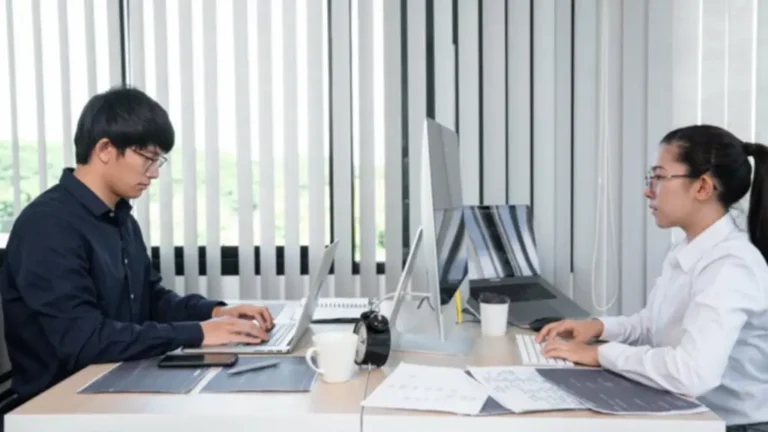Working remotely can maximize productivity by making a dedicated workspace, managing time wisely, and setting practical goals. Doing these items will help guarantee productiveness is maintained while working remotely. By creating a dedicated workspace that is each comfortable and practical, remote workers can increase their productiveness and preserve a clear distinction between their work and personal lives.
These spontaneous interactions often spark creativity, enhance problem-solving, and supply useful opportunities for professional networking. Traditional in-person work environments prohibit the talent pool obtainable to hiring managers, which outcomes in less range within the process. Through the remote work model, your corporation can reap the benefits of a wider range of demographics which may have been ignored when focusing solely on local candidates.
- It requires individuals to show sturdy self-discipline and time management expertise to make sure productiveness and prevent burnout.
- With Out the bodily separation of a standard office, remote staff could find it difficult to determine clear boundaries between work and personal life.
- Remote work can also present challenges when it comes to communication and collaboration.
- On the other hand, it can blur the road between work and personal life, resulting in burnout.
Distant work offers flexibility, autonomy, and a lack of commute, while traditional workplace jobs provide social interaction, structure, and collaboration. Ultimately, the greatest choice will depend on your private preferences and work style. Consider the professionals and cons of each choice before making a call that aligns along with your needs and objectives.
For staff, distant work arrangements can result in an improved work-life balance, as they have more management over their schedules and might higher handle their personal and professional obligations. The shift to remote work is driven by the need for a greater work-life stability and price financial savings. Expertise developments, particularly in computing, have made distant work possible, enabling workers to collaborate globally. The growing trend in path of remote work is altering how companies function, creating new alternatives and challenges for workers and employers.
Work from home means employees predominantly work out of the identical place the place they stay, generally in a devoted home workplace. Work from anywhere means workers can work from any location—such as coworking spaces, coffee shops—in any city. In the most broad sense, staff of an organization share a physical area, interact in-person, and commute from their properties to the office. Tradition and communication apart, distributed work poses a big safety challenge for many organizations.
Supercharge Your Worker Productivity With Time
Workers face more distractions, like disruptive coworkers and noisy environments. They are more likely to reward false productiveness, the place workers are valued simply by showing up. One of the numerous advantages of distant work is the unparalleled flexibility it presents. In Accordance to a examine conducted by Owl Labs, 34% of remote staff reported that flexible schedules have been the most effective a half of working remotely. Additionally, because of the rise of remote work in the US, industrial spaces are facing high vacancy charges. With firms adopting work-from-home policies in response to the COVID-19 pandemic, staff no longer have to physically be present in workplace areas.

The Ultimate Dilemma: Remote Work Vs Traditional Office Employment
As for employers, distributed work can result in decrease infrastructure and tools costs while increasing worker satisfaction and significantly expanding the expertise pool. But regardless of all its benefits, the all-or-nothing method of distributed work is less than ideal. According to FlexJobs, though 65% of employees want to work remotely full-time, 31% choose to work within the workplace a minimal of a few of the time. As a result, employers could encounter challenges in reverting to pre-pandemic working norms. Staff may have grown accustomed to the flexibleness and freedom that remote work offers, and adjusting again to conventional workplace settings might be met with resistance. Technology-related fields, similar to software program growth, digital advertising, and web design, usually provide intensive remote work options.

To stay on high of your work whereas distant, begin by making a dedicated workspace that minimizes distractions. Having a correct setup with a desk, snug chair, and good lighting can improve focus. Set Up clear routines by starting and ending work at constant occasions, simply as you’ll in an office. Often talk along with your team to remain aligned on projects and maintain relationships. And lastly, use productiveness tools like task managers (Trello, Asana) and time trackers to keep your self accountable. A advertising specialist might work asynchronously with group members spread throughout a quantity of time zones, and even from a remote location.

They also have the ability to work in a snug environment of their choosing, which might lead to elevated job satisfaction and productiveness. Employees can select the proper environment primarily based how to manage a remote team on their schedule each day, maintaining flexibility that allows them to optimize their workplace. Managers can stability meetings and productive time through the use of remote and office time effectively—giving staff long intervals of time for deep work and focus.
Healthier Way Of Life
As organizations grapple with the choice between distant work and the standard office setup, hanging a balance that meets the needs of both employees and employers is important. Embracing hybrid fashions that combine the most effective of each worlds can supply the flexibleness and collaboration needed for success in right now’s dynamic work surroundings. On the flip side, virtual workers work remotely, often from the comfort of their own houses. For one, there is no commute, which can save a big amount of time and stress. It also offers a degree of flexibility that conventional workplace work merely can’t match.
Instruments like video conferencing platforms and project management software program have simplified remote staff collaboration. Companies that do not supply distant options—and usually are not big enough to open multiple places of work throughout the world—can solely entry a geographically-constrained labor pool with restricted entry to expertise. In the long-term, they might expertise larger turnover or dissatisfaction as staff move to remote and hybrid firms. Other companies have decided to keep their offices open as a coworking house for workers who prefer them even if coming into the office is not required by company policies. These workplaces resemble versatile coworking spaces—areas for infrequent collaboration, somewhat than assigned cubicles confining staff to their desks throughout long workdays.
In Accordance to PwC, 52% of employers felt their firm was extra productive working from home, however solely 34% of employees felt the same. About 83% of employers and 71% of workers say distant work has been successful throughout Covid-19 pandemic. Throughout the Nice Recession, when firms looked to downsize their workplaces as a cost-saving measure, many employers allowed their staff to do business from home. In the following years, even as the economy rebounded, a few of that flexibility remained—especially in software program growth. Though distributed work is not sensible for a lot of, businesses that can https://www.globalcloudteam.com/ support telecommuting clearly plan to do so.
A well-structured remote work setting, complete with a dedicated residence workplace setup and clear boundaries (even bodily ones), can help maximise productivity. Instruments like time trackers, project administration software program, and scheduled breaks can also contribute to sustaining your productiveness and mental well being whereas working remotely. Another benefit of conventional office jobs is the structure and routine that comes with working in an office.
In a conventional setting, managers can control their group, provide instant feedback, and tackle issues LSTM Models on the spot. You cannot micromanage from a distance, so it is crucial to set clear expectations, deadlines, and deliverables. First off, let’s speak in regards to the elephant in the room – face-to-face interaction.
One of the most important advantages of working in an workplace is the opportunity for social interplay and collaboration. In an workplace setting, workers have the opportunity to construct relationships with their coworkers and collaborate on projects in real-time. On the other hand, the normal office setup fosters teamwork, collaboration, and spontaneous interactions among colleagues. It supplies a structured environment and promotes a sense of belonging and camaraderie. But, it might result in longer commutes, inflexible schedules, and limited work-life stability. Remote work, also called telecommuting, includes working from a location exterior of the traditional workplace setting, typically from home or a shared workspace.



